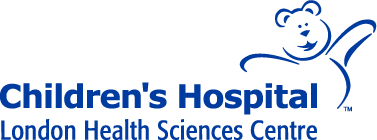Disclaimer to the Online Edition
This Manual has been designed for use in the NICU at London Health Sciences Centre (LHSC), London, Ontario, Canada, and represents clinical practice at this institution. The information contained within the Manual may not be applicable to other centres. If users of this Manual are not familiar with a drug, it is recommended that the official monograph be consulted before it is prescribed and administered. Any user of this information is advised that the contributors, Editor and LHSC are not responsible for any errors or omissions, and / or any consequences arising from the use of the information in this Manual.
adenosine
Indication
- For conversion of paroxysmal supraventricular tachycardia (PSVT), including that associated with accessory bypass tracts (Wolff-Parkinson-White Syndrome), to normal sinus rhythm
Pharmacology
- An endogenously occurring nucleoside
- Profoundly blocks AV node, therefore allows examination of rapid atrial rhythms and can interrupt re-entry pathways through the A-V node
- Adenosine is believed to produce its effects via an interaction with specific cell surface receptors which are coupled to a regulatory G protein
- Adenosine also appears to increase potassium conductance, depress calcium - mediated slow channel conduction and possibly antagonize catecholamine mediated effects
- Adenosine is rapidly metabolized by adenosine deaminase in whole blood and by endothelial cells to inosine; it's in vitro half life, in human blood, is less than 10 seconds; therefore, any physiological effects (E.G. first, second or third degree heart block) are usually self-limiting and short lived
Side Effects
- The most common side effects, reported in clinical trials in adults, include flushing (18%), shortness of breath/dyspnea (12%), and chest pressure (7%)
- Other side effects which occurred in approximately 1% of patients include sweating, palpitations, hypotension, dizziness numbness and hyperventilation
Precautions
- Adenosine is contraindicated in second or third degree A-V block and in sick sinus syndrome
- Adenosine may cause first, second or third degree heart block; because of adenosine's very short half life, these effects are usually self-limiting and short-lived
- Various arrhythmias (E.G. sinus bradycardia, sinus tachycardia, atrial or ventricular premature contractions) may occur at the time of conversion; these generally last only a few seconds and do not require intervention
- Methylxanthines (eg. theophylline, caffeine) antagonize the actions of adenosine; larger doses of adenosine may be required or it may not be effective
Dose
- 50 mcg/kg rapid IV push (preferably through the umbilical vein) by MD only
Flush immediately with 0.9% NaCl
Increase dose in 50 mcg/kg increments every 2 minutes until sinus rhythm is established. Usual maximum dose is 250 mcg/kg - Adenosine has also been administered as a continuous IV infusion in a pediatric patient; the initial infusion rate was 0.05 mcg/kg/min; this was increased to a maximum rate of 0.3 mcg/kg/min
- Adenosine may be diluted to 1 mg/mL as follows:
- 0.33 mL of adenosine solution (3 mg/mL) plus 0.67 mL of 0.9% NaCl = adenosine 1 mg/mL
- This diluted product is physically stable for at least 24 hours.
- Do not refrigerate
- Note that there is no preservative present
- Hepatic and/or renal failure should have no effect on the dose or activity of adenosine, since neither organ is involved in its metabolism
Supplied
- 3 mg/mL, 2 mL vial
References
- Adenocard IV(R), Product Insert, Fugisawa USA, INC, Deerfield, IL, November 1990
- Ihehly MR and Chow MSS: Adenosine - a novel antiarrhythmic for the treatment of supraventricular arrythmias, Hospital Formulary 1990; 25:264-274.
- Till J, Shinebourne EA, Rigby ML et al: Efficacy and safety of adenosine in the treatment of supraventricular tachycardia in infants and children, Br Heart J, 1989:62:204-211
- Young TE and Mangum OB: Neofax - A Manual of Drugs Used in Neonatal Care, Columbus, Ohio: Ross Laboratories, 1992.
